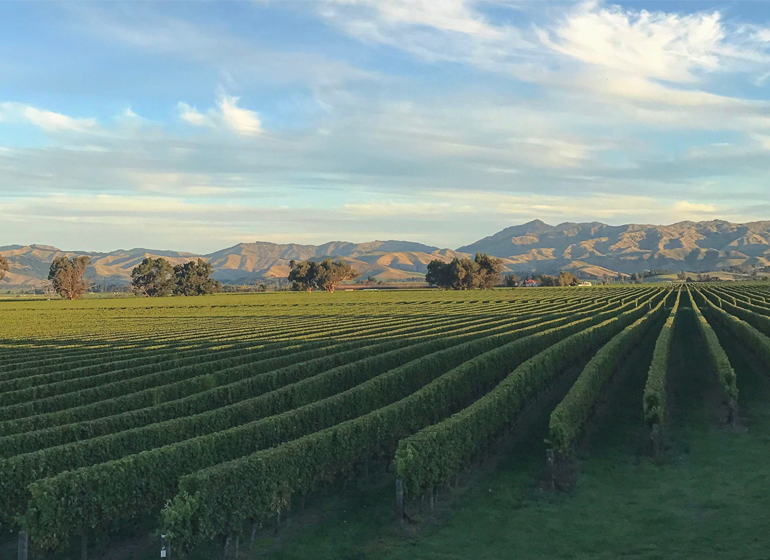Written by Julia Lambeth
Standing in a vineyard in Macedon, Victoria on a spring morning, I didn’t expect my first thought to be “I wish I’d brought a jumper and some gloves.” And yet it was. Last year, while planning my trip to Australia, I’d assumed it would be all warm days and sunny skies – but it turns out there’s a lot more to Australia than that! And this makes sense when you think about it.
As a standalone country Australia is roughly the same size as Europe, so it’s bound to have a variety of climates and temperatures. Down in the southern parts near Melbourne was precisely where I experienced this. Melbourne is regarded as the most European city in Australia, partly because of its culture and partly because of its weather. You’re told to expect 4 seasons in a day, and it’s true.
So what does this change in temperature mean for Australia’s finest wines? Climate is one of the most important factors in understanding how a wine is going to taste. Why? Because weather determines how a grape ripens. Broadly speaking, the warmer the region, the higher the grape’s sugar content is and the lower its acidity will be. So the wine will contain more alcohol, more body and an intense flavour, but may not have the same refreshing acidity as cooler climate wines.
Cooler climates by contrast retain more acidity but build up less sugar, so these wines are lighter bodied, delicate and more refreshing. Neither is right or wrong when it comes to wine. But if you have a preference for one style over another, it may help to identify the climates that your favourite varieties come from. And remember, most countries have a mixture of different climates. For instance, Northern France is different to Southern France, and the same goes for Australia too.
Most people think of Australian wine consisting of big buttery Chardonnays or ripe and fruity Shiraz, but these are actually a hallmark of the warmer regions. Start looking at the cooler areas and you’ll soon find a vast selection of different styles.
Chardonnay is still grown in abundance, but it is fresher and more delicate on the palate. You can also find some other white grape varieties such as Riesling and Pinot Gris – those typically associated with Northern France. Awesome sparkling wines often made in the Champagne style consist of a similar blend of grape varieties. They keep the same freshness, only with a riper flavour.
For red grapes, Pinot Noir is much more prevalent. Case and point, the grape variety of wines from Burgundy in France! The wines here tend to have a little more body and fruity character than French ones, but again this is by no means a bad thing! You can find Shiraz and Cabernet Sauvignon here, but these are more elegant, restrained and herbaceous than their warmer climate counterparts. These are not typically high alcohol heady styles, they’re a little more structured and serious wines that go well with food. They also benefit from keeping for a few years.
If you’re interested in trying some of these regions, be sure to look out for wine labels that feature Yarra Valley, Mornington Peninsular, Adelaide Hills, Geelong, Macedon, and of course, Tasmania – the coolest Australian wine region!
Or if you fancy coming along to a tasting session that showcases Aussie wines, our next event will focus on varieties from Australia and New Zealand.
FULL DETAILS: World Of Wine: Australia and New Zealand, South London Wine School, Thursday 8th March 2018 at The Mitre in Greenwich, South London. Tickets are £27.00 per person and places are limited.


